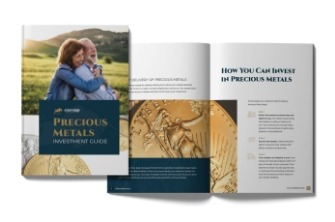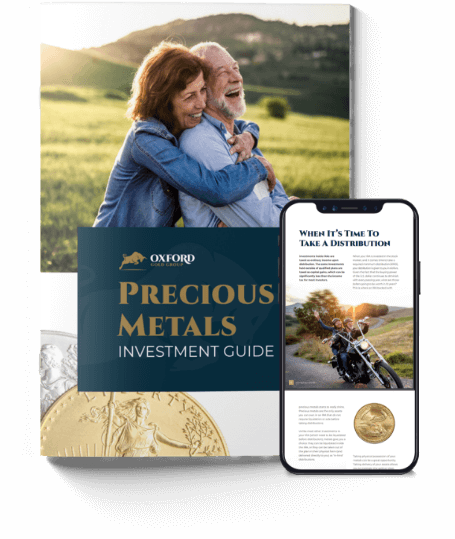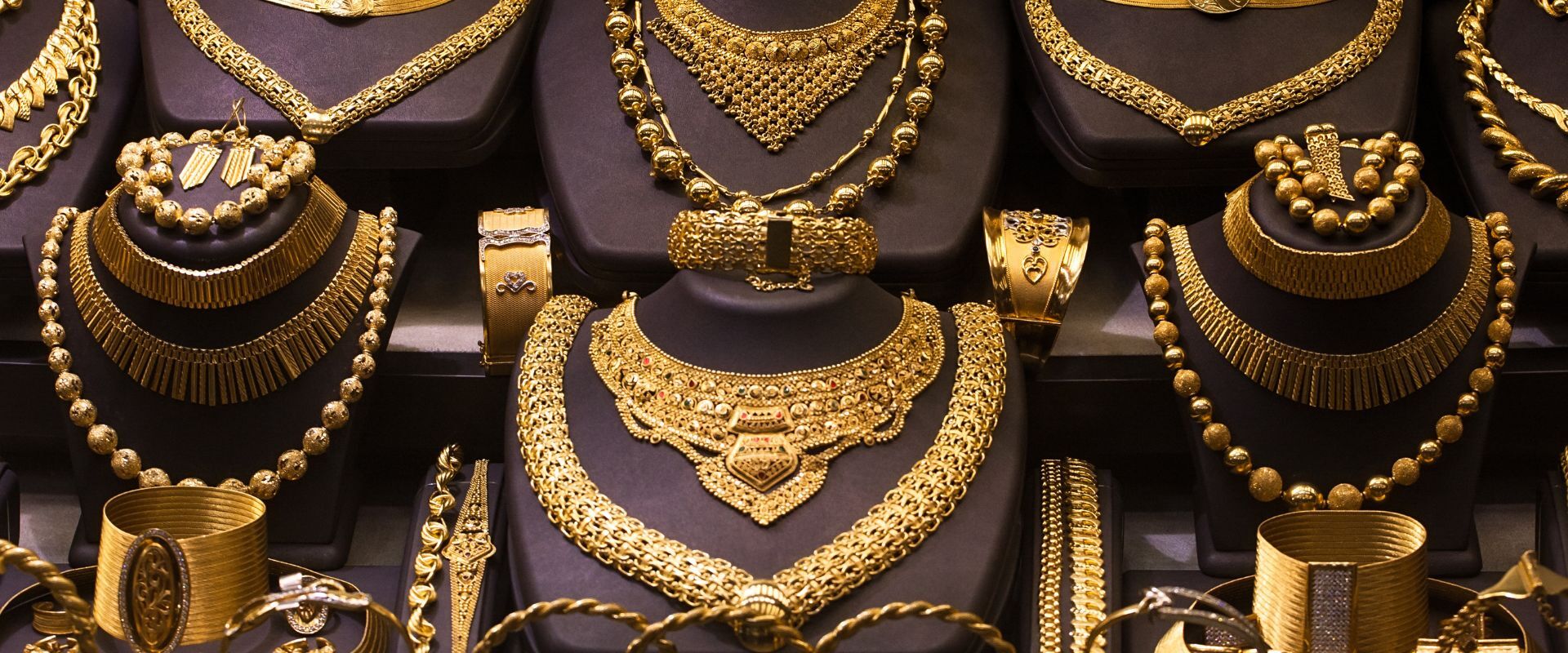Table of Contents
It’s never too early to start planning for retirement. Most investors strive to diversify their portfolios, which often includes investing in gold. While you have several available methods for investing in gold, IRAs are a favorite among retirement planners.
A gold individual retirement account acts like a typical IRA but stores physical gold and other precious metals. Although you can fund your gold IRA in many ways, one of the most popular methods is a rollover. But that leaves the question: what is a gold IRA rollover?
If you’re asking this question, you’re not alone. When it comes to funding a gold individual retirement account, it’s crucial to think about the different methods available and the benefits of each.
In short, a gold IRA rollover is when you move funds or assets from existing retirement accounts to your gold IRA. This is a great way to diversify and add a safe haven asset to your investment portfolio.
Why do people often prefer this method over others when funding their gold IRAs? We’ll discuss everything you need to know about gold IRA rollovers in this guide.
Understanding Gold IRA Rollovers
If you want to understand how gold IRA rollovers work, you first need to know how gold IRAs themselves work.
A gold IRA is like a typical individual retirement account, but instead of holding cash, stocks, or bonds, it holds physical gold. You can also hold other types of precious metals in a gold IRA, like silver, platinum, and palladium.
You can open two types of gold IRAs:
- Traditional IRA: has contribution taxes but no withdrawal taxes
- Roth IRA: has withdrawal taxes but no contribution taxes
Once you open your gold IRA, you need to fund it by rolling over money from your other retirement accounts.
How Does a Gold IRA Rollover Work?
The gold IRA rollover process is rather simple since a custodian does it for you. When you open your gold IRA, you notify your custodian, and they handle the various paperwork to initiate the rollover of funds. When complete, your gold sits in an IRS-approved storage facility until you make a withdrawal or liquidate your precious metal assets.
If you want to roll over funds from a retirement account you have with an employer, you’ll need to check with the plan manager before rolling over funds. Most people do this when they no longer work for the company. For further guidance, consult a financial planner.
While the concept of a gold IRA is rather simple, you have more than one way to roll over your funds.
Direct Rollovers
A direct rollover is one of the simpler methods, as it takes money directly from your previous retirement accounts and rolls it over to your gold IRA.
With a direct rollover, you never see the funds. Rather, your plan administrator writes a check and sends it to your gold IRA. Going this route also ensures the IRS doesn’t withhold any money for tax purposes.
Indirect Rollovers
If you prefer to be the middleman, you can opt for an indirect rollover. For this method, your plan administrator issues you a check, which you can use to set up a gold IRA or invest in other retirement plans. You can do this without the IRS withholding funds for taxes, so long as you do so within 60 days.
The Process of a Gold IRA Rollover

Now that you know the answer to “What is a gold IRA rollover?” you should know how it works. When you decide to roll over all or some of the assets from your original retirement accounts to a gold IRA, your new custodian will help you with the process, from the initiation to the storage of your precious metals.
Not all companies operate the same way, but you will typically follow these steps when rolling over funds to your gold individual retirement account:
1. Find a Reputable Gold IRA Company and Custodian
Not all retirement accounts or financial institutions offer gold IRAs, so you’ll likely have to find a new gold IRA company. Ideally, the company should be willing to educate you on the investment process and what precious metals you can purchase. Your gold IRA company should be your guide throughout each step, from learning how to open the gold individual retirement account to rolling over funds and storing your precious metals.
A reputable gold IRA company will also help you find a custodian. Finding a gold IRA custodian is crucial, as the IRS does not allow you to store your own gold.
Your custodian manages your gold IRA by coordinating various transactions and helping you find an IRS-approved storage facility for your gold.
Having a reliable custodian makes everything significantly easier since they handle the paperwork and record your transactions for you. They will even manage the purchasing and selling of your gold assets, ensuring you remain legally compliant while keeping your physical investment safe and secure.
2. Open Your Gold IRA
Once you find a company and custodian to work with, you can start setting up your gold IRA. You will want to do this as soon as possible to streamline the rollover process.
Your gold IRA company and custodian will work together to help you set up and fund your account. Fortunately, gold IRAs don’t have a minimum investment requirement, but most companies encourage you to deposit higher amounts to make the most of your investment. This also makes your storage and account fees a smaller percentage of your investment.
An essential thing to remember during this step is that you should not buy your gold before opening the IRA account. Let your account manager help you set up your account and show you the best way to fund it.
3. Roll Over Funds to Your Gold IRA

After successfully setting up your gold individual retirement account, you can start rolling over funds from your other retirement savings accounts. As we previously mentioned, you can do this directly or indirectly, depending on your preference, and your custodian will typically do this for you.
4. Purchase Your Gold or Other Precious Metals
Since a gold individual retirement account holds physical gold, you’ll use your funds to purchase gold products or other precious metals. Your gold IRA company and custodian can help you explore your options and decide which metals to buy.
The IRS only allows you to invest certain metals in your IRA, but we’ll discuss this more below.
5. Find IRS-Approved Storage
Whether you buy gold or another precious metal, you must store it in an IRS- and custodian-approved facility. These facilities have high-end security measures to keep your investment safe and secure around the clock. You cannot store gold in your home if you want it for your individual retirement account.
Your custodian will help you find a qualified gold storage facility and manage the transportation process.
The Benefits of a Gold IRA Rollover

With a gold IRA rollover, you can move funds from multiple types of retirement accounts, not just other IRAs. You also have the option of moving all or just a portion of your assets from other retirement accounts, giving you more control over your portfolio.
However, one of the most significant benefits of a rollover is the tax advantage. By rolling over funds from a previous retirement account to your gold IRA, you don’t have to worry about early withdrawal tax penalties or other taxes.
The Pros and Cons of Gold IRAs
Many people add precious metals to their investment portfolios since they act as a hedge against inflation. Essentially, gold and other precious metals tend to maintain their value, even when the market dips. Thus, gold IRAs are becoming an increasingly popular investment option for those looking to set up a financially secure retirement.
However, before you contact a gold IRA company and start setting up an account, you need to consider the benefits and potential drawbacks of doing so.
The Advantages of a Gold IRA
As previously mentioned, gold acts as a hedge against inflation, making it an attractive asset for investors of all experience levels. A gold IRA allows you to invest in your future using gold and other precious metals. A gold IRA also makes it easier to safely store your gold while allowing you to enjoy the same tax benefits of traditional retirement accounts.
The Disadvantages of a Gold IRA
Since gold IRAs hold physical commodities, they tend to have higher fees than other retirement accounts. You will typically have to pay fees for storage, transportation, and insurance. Additionally, while gold tends to hold its value during times of economic uncertainty, it doesn’t always offer a high return on investment.
Eligible Retirement Accounts

What is a gold IRA rollover, and what retirement accounts can you use? Multiple types of retirement accounts are eligible for gold IRA rollovers, including:
- 401(k): You might have a 401(k) through your employer. This account type allows you to invest in retirement by contributing part of your paycheck.
- 403(b): Non-profit organizations and school systems often offer employees 403(b) plans. You and your employer can contribute to this account.
You can also roll over funds from your non-gold traditional or Roth IRA.
Eligible Products for Gold IRAs
When purchasing gold, you can get coins or bullion, but they must meet specific purity standards.
For example, silver bars or coins must have 99.9% purity to be eligible for an IRA. Meanwhile, gold must have 99.5% purity. Coins must also meet additional requirements by having government mint approval.
Only one gold coin is an exception to these purity standards: the American Gold Eagle coin. This coin only has a purity level of 92.67%, but you can still purchase it for your gold IRA.
You can also invest in gold stocks or ETFs.
Important Factors for Choosing a Gold IRA Custodian

Your gold IRA custodian acts as your guide for account setup, rollover, and every other transaction. They have the crucial responsibility of ensuring you remain legally compliant with the IRS, so you need to do your due diligence by finding the right custodian for your gold IRA and investment goals.
When conducting your search, look for the following qualifications:
- Customer service: Your custodian should not only be friendly and helpful but also available when you need them. Check a custodian’s online reputation by browsing reviews on the Better Business Bureau website and other sites.
- Certification: Custodians and brokers must have certain certifications, licenses, and bonds.
- Response rate: Ideally, your custodian should be available 24/7 to answer your questions and provide guidance when you need it. They should also have ample knowledge of gold IRAs and related fields.
- Transparent communication: Custodians charge different fees, so you want to find ones without hidden costs. Find a custodian who’s transparent and upfront about their fees.
If you have any friends or relatives with gold IRAs, you can ask them for recommendations. Otherwise, searching online is the best way to explore your options and find qualified custodians with positive reputations.
What About Gold IRA Transfers?
What is a gold IRA rollover, and how is it different from a transfer? While the two methods are similar, they have one primary difference.
With a rollover, you can move money and assets from multiple types of retirement accounts to your gold IRA. However, a transfer requires you to move money from one IRA to another. Essentially, a gold IRA transfer is when you move funds from a traditional, Roth, SEP, or SIMPLE IRA to your gold individual retirement account.
In either case, your custodian helps you move the funds and complete the necessary paperwork.
Storage and Security Considerations

When purchasing gold, silver, or other precious metals for your gold IRA, you can’t simply put them in your home’s safe. The IRS has strict requirements regarding where you can store your gold for retirement. Why?
Many people with gold IRAs hold a significant amount of gold and other precious metals. They need to ensure they can protect their investments, so the IRS requires you to store your physical commodities in specific storage facilities.
While your custodian will help you find an IRS-approved facility, you should consider factors like fees and security.
Since the facilities have to store your physical gold, you’ll pay certain storage fees. These fees vary with each facility, but you’ll likely have to pay:
- An initial setup fee
- An annual storage fee
- A transaction fee
Additionally, you may have to pay additional fees for transporting your gold from the dealer to the storage facility. The main expense to pay attention to here is the storage fee since you’ll have to pay this every year, and it ranges from $50 to $500. Ideally, your fees should only be equivalent to 5 or 10% of your total investment.
When it comes to security, your storage depository should spare no expense. IRS-approved facilities have state-of-the-art security measures and secure storage facilities that grant only you access to your precious metals. These facilities should also have sufficient insurance to provide an additional layer of protection for your assets.
IRS Guidelines for Gold IRAs
Like other IRAs, gold retirement accounts must follow strict IRS guidelines, which cover more than just storage. While the IRS doesn’t necessarily have a minimum investment requirement, it does have a cap. For instance, you can only contribute up to $6,500 to your IRA each year, though this number increases to $7,500 if you are over 50 years old.
Keep in mind that these contribution limits are for 2023 and could change within the coming years.
The IRS also has certain guidelines regarding IRA withdrawals. If you are younger than 59 and a half, then you are subject to a 10% tax if you make a withdrawal from your IRA; you are not subject to this tax if you are older.
Finally, people 73 and older must meet the minimum distribution requirements. Your required distribution amount depends on the total value of your investment, but you can use the IRS website to calculate your expected distribution amount.
Wrap Up
Gold IRAs are a great way to diversify your portfolio while investing in wealth preservation. Although they work much like other individual retirement accounts, they must follow additional IRS regulations.
You can fund your gold IRA in three main ways:
- Transfer
- Rollover
- Cash contributions
With cash contributions, you can simply use your own money (from a checking or savings account) to purchase gold for your IRA. However, rollovers tend to be the preferred option for their simplicity. Rollovers also allow you to move funds from multiple types of retirement accounts, whereas transfers only allow IRA-to-IRA transactions.
Rolling over funds to a gold IRA is also a great way to further invest in your future and prepare for retirement. If you’re ready to open a gold IRA or have more questions besides “What is a gold IRA rollover?” a certified custodian can act as your guide and show you how to set up and fund an IRA while remaining legally compliant with the IRS.








